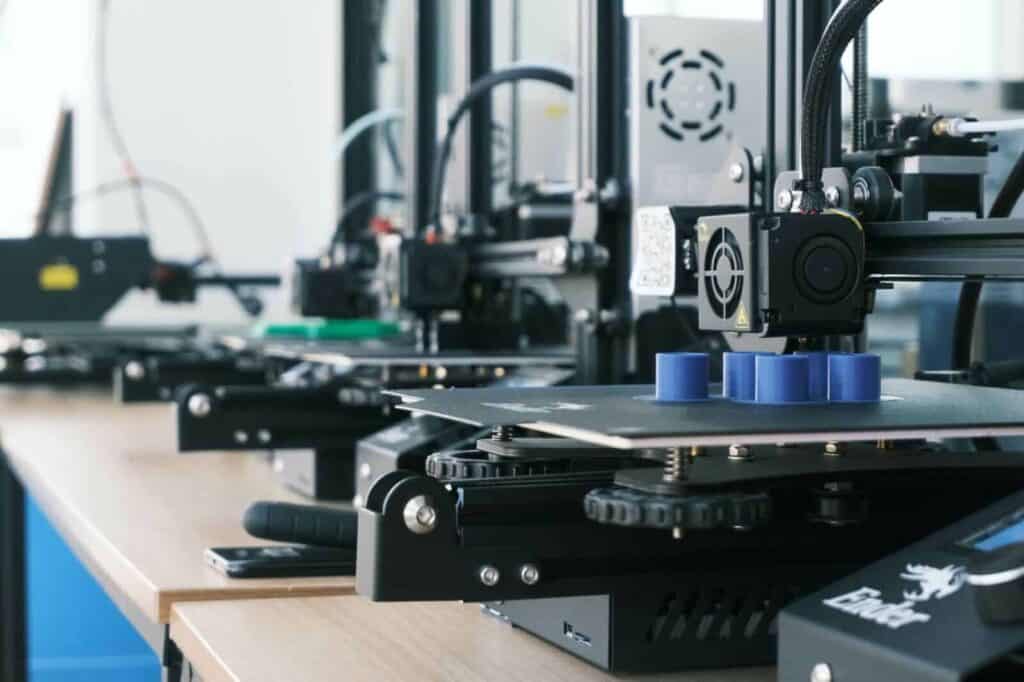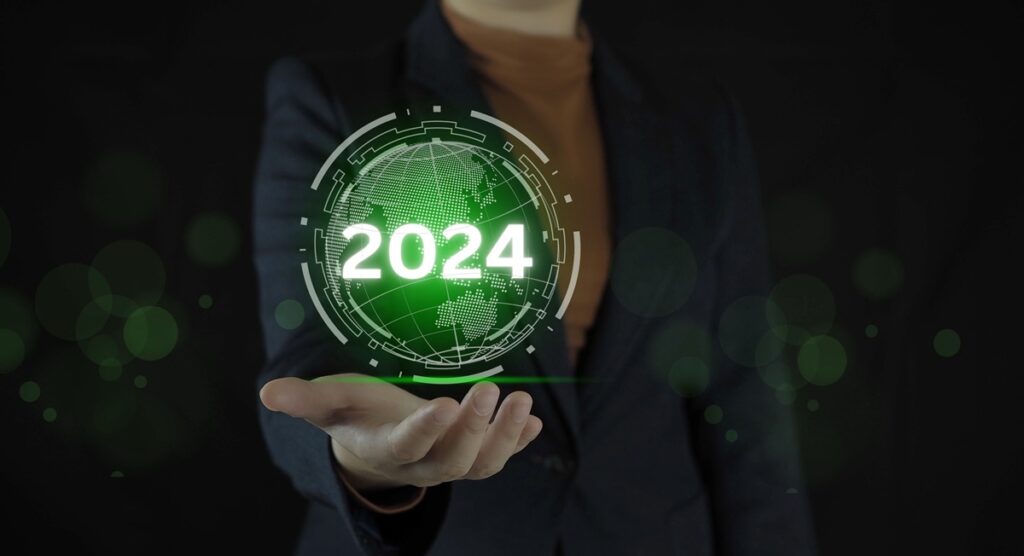As the race to net zero accelerates, manufacturing CEOs are poised to transform their entire operations, from the shop floor to waste management and even rethinking land use, with sustainability integrated throughout every aspect. During this era of “green transformation,” leaders ultimately fall into two categories: trailblazers leading the way and slow starters, who trail behind. If McKinsey and Co.’s prediction proves accurate, by 2027, 75 per cent of S&P 500 businesses will disappear entirely. This alarming prediction sends a clear message to CEOs: to remain competitive, leaders must proactively transform their businesses to meet the green demands of today, and groundbreaking technology, such as generative artificial intelligence (GenAI), will play a key role in expediting their efforts.
According to Gartner, by 2028, 1 in 4 top-performing global companies will leverage GenAI to reduce net emissions to zero. Waste management and production are among the most significant and expensive challenges that businesses face in reaching net zero, particularly in manufacturing, one of the world’s top polluters. According to the United Kingdom’s Business Waste, the industry produces approximately 2 billion tonnes of industrial waste annually, accounting for 50 per cent of all worldwide waste. Most of the waste is generated from overproduction, defective merchandise, and “leftover” waste, resulting from the remnants of raw materials not required in the final product.
In the current economic environment, CEOs must get ahead of the competition in all areas, including in the race towards net zero and reducing waste with innovative technologies such as AI, which can strategically help them do this.
This begs the question: is GenAI the silver bullet for achieving net-zero emissions, significantly reducing waste, and simultaneously enhancing operational efficiency? While there aren’t any shortcuts, GenAI certainly has the potential to reduce waste, boost productivity, and grow the topline.
The application of GenAI in manufacturing: innovation = efficiency
The hype surrounding GenAI continues to build, and for good reason. According to Ernst & Young (EY), GenAI is estimated to unlock approximately USD $1.7 trillion to $3.4 trillion in gross domestic product (GDP) by 2033. In manufacturing alone, by 2033, MarketResearch.biz predicts that the global GenAI market will soar to approximately USD$6.4 million. In a world where digital transformation is revolutionising the sector, if CEOs leverage GenAI to suit their business needs, they can enable their businesses to thrive in all areas, including waste reduction and, ultimately, resulting in net-zero operations.
There are many ways manufacturers can apply GenAI to their processes. For example, fashion companies can leverage GenAI in 3D weaving technology. Making clothes made to fit minimises waste, enabling the industry to cut its carbon emissions. In the case of Airbus, their generative design enables their jetliners to consume less fuel and reduce waste and their overall environmental footprint.
To fully unlock the potential of AI and GenAI, CEOs must start with purpose-driven innovation. This way, they can ensure the emerging solutions adopted are fit for purpose and strategically align with business goals and values. Here are five ways companies can apply AI to reduce waste and, in the process, boost efficiency.
The top 5 ways AI can optimise waste management
1. Intelligent process optimisation
Imagine rotting food that sits in trucks due to poor planning or overproduction of inventory that happened due to human error. Within the realms of planning, production, etc., AI can support the enhancement of processes, ultimately reducing waste. A new AI-driven system developed by University of Virginia researchers could eliminate these errors and establish new benchmarks for manufacturing efficiency, as reported by MSN.
2. Advanced predictive maintenance
Traditional maintenance strategies are reactive and only take effect once machinery breaks down, but GenAI can stop disruptions before they occur. AI supports predictive maintenance by forecasting failures before they happen, which can cut surplus parts and excessive inventory requirements, decrease waste, and conserve resources while sustaining peak operational efficiency.
3. Enhanced supply chain management
Research uncovered that AI-enabled supply-chain management leads to significant operational improvements, improving service levels by up to 65 per cent and inventory by up to 35 per cent and more. AI can boost supply chain efficiency by providing actionable insights and real-time data analytics, leading to improved demand forecasting and cutting overproduction and excess inventory.
4. End-to-end traceability technologies
AI-enabled tech that tracks and reduces waste can help expose the reasons for production errors and help establish best practices to sustainably source, produce and dispatch high-quality goods. CEOs who use AI for digital tracing can uncover inefficiencies and execute targeted waste reduction strategies, leading to cost savings, reduction of emissions, and positioning their firm as a sustainability leader.
5. Generative design and lifecycle management
Generative design can enable eco-friendly practices such as the utilisation of sustainable materials that are not only good for the environment but also keep customers happy. These products can have an optimised lifecycle through better integrated sustainable processes to reduce waste and emissions to support net-zero advancement activities.
The AI advantage: expediting sustainability efforts
In summary, the pursuit of reaching net-zero carbon emissions by 2050 is an ambitious goal and something that requires company-wide effort and dedication. Manufacturers are among some industries that have the most work to do, given the change needed to move towards net zero. Leaders must change their mindset on sustainability and embrace innovative technologies like AI that can boost efficiency, expedite efforts to reduce waste and optimise land use. Our top five ways to optimise and address waste management are a start, but CEOs must also categorise business activities into two categories: activities that support sustainability goals and activities that instead sabotage eco-friendly goals.
To develop a plan that addresses business activities that are not aligned with sustainability business goals, a robust Environmental, Social, and Governance (ESG) framework, such as the Consumer Sustainability Industry Readiness Index (COSIRI) is central to sustainable efforts. COSIRI is a widely recognised framework that can evaluate sustainability maturity across various dimensions, including the shop floor, supply chain, logistics, strategy, risks, workforce development, and leadership. COSIRI can reveal powerful insights that CEOs can use to make strategic decisions, supporting the integration of sustainable practices into operations. To learn more about COSIRI, visit our COSIRI Assessment page.
Frequently Asked Questions About AI in Sustainable Manufacturing
What Role Does AI Play in Reducing Errors and Waste in Supply Chain Management?
AI reduces errors and waste in supply chain management by improving demand forecasting, automating inventory control, and detecting inefficiencies. This leads to smarter decisions, less overproduction, and lower resource waste.
How Does AI Support Sustainable Manufacturing Practices?
AI supports sustainable manufacturing by optimising energy use, reducing waste, predicting equipment failures, and improving process efficiency. It helps manufacturers align operations with sustainability and ESG goals.
What Are Examples of AI Applications in Reducing Industrial Waste?
Examples include AI-powered quality control to reduce defective products, predictive maintenance to avoid equipment breakdowns, and smart production planning to minimise raw material waste.
Can AI Help Manufacturers Lower Their Carbon Footprint?
Yes, AI can help manufacturers lower their carbon footprint by optimising energy consumption, reducing material waste, and enabling data-driven decisions that support low-emission production.
How Does AI Improve Energy Efficiency in Factories?
AI improves energy efficiency by analysing equipment performance, predicting peak energy usage, and automatically adjusting systems to reduce unnecessary power consumption in real time.
What is the Impact of Predictive Analytics on Sustainable Manufacturing?
Predictive analytics helps sustainable manufacturing by forecasting maintenance needs, reducing downtime, and minimising resource waste. It allows manufacturers to run more efficiently and sustainably.
How Does AI Enable Real-time Decision-making in Manufacturing?
AI enables real-time decision-making by processing live data from machines and sensors to detect problems, adjust processes, and optimise performance instantly, supporting agile and efficient operations.
Why is AI Important for Circular Economy Initiatives in Manufacturing?
AI is important for circular economy initiatives because it helps track resource usage, predict material reuse opportunities, and design waste-minimising production cycles, enabling closed-loop manufacturing systems.
What Challenges Do Companies Face When Implementing AI for Sustainability?
Challenges include high implementation costs, data integration issues, lack of skilled talent, and resistance to change. Companies must align AI with clear sustainability goals to maximise impact.
Why is AI Important in Sustainable Manufacturing?
AI is important in sustainable manufacturing because it enables smarter resource management, waste reduction, energy savings, and process optimisation—all critical for achieving long-term environmental and operational goals.


